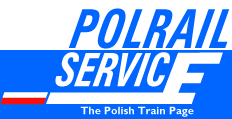A Short PKP History
With 24,312 kilometers in its network (1994) and employing 139,000 people (2004), the Polish State Railways (PKP) is one of the larger railway systems of central or western Europe. Although the first trackage under its control dates from 1845, as a consolidated system the PKP is not that old, having been established in 1918 following the new-found independence of the Polish nation following the First World War.
The new PKP was comprised of trackage formerly under the control of Germany, Austria and Russia. With differing styles of locomotive and rolling stock, signaling and operating practices, and a route network better connected to now-foreign countries than internally, the PKP set to establishing a national system. New factories began turning out Polish-built locomotives by 1921, and electrification began in 1936, when the cross-city system in Warsaw was wired with catenary.
locomotive and rolling stock, signaling and operating practices, and a route network better connected to now-foreign countries than internally, the PKP set to establishing a national system. New factories began turning out Polish-built locomotives by 1921, and electrification began in 1936, when the cross-city system in Warsaw was wired with catenary.
The Second World War brought massive destruction to Poland's railways. Being a crucial part of the German war effort, the system was subjected to wide-spread bombing. The retreating German armies brought further destruction at the end of the war as they destroyed railway facilities on their westward flight.
Under Soviet occupation, the rebuilding of the PKP started in earnest in 1945. Electrification began on certain key sections, but steam locomotives continued to play a key role in providing motive power. The last steam locomotive was built in 1957, but steam locomotives continued in wide-spread service until the late 1980's!
Continued electrification brought higher speeds and reliable service to most important routes through the 1970's and 80's. New generations of equipment brought improved traveling conditions. The PKP played an important part in the national transportation system.
The coming of democracy to Poland in 1989 has led provided new opportunities and challenges for the PKP. Forced to operate with declining government subsidies, declining ridership (due to the increase in private automobile ownership) and declining freight traffic, the PKP has had to react by reducing service, abandoning some lines, and increasing fares. At the same time, new links and cooperation with the railways of western Europe have led to the introduction of Inter-City and Euro-City trains and new rolling stock to the network, and improvements in trackage and signalling. The recent project to upgrade the Berlin-Poznan-Warszawa line for high-speed service is just one example of this.
The PKP continues to adapt to the free-market economy. Many branch line services to many smaller towns have disappeared, and the PKP is positioning itself to offer fast, comfortable travel between many large and moderate cities throughout the country. In recent years the company has been divided into subsidiary companies, including an infrastructure company that owns the tracks and signals, a cargo company, and most importantly, for the average rail traveller, several passenger train operators.

